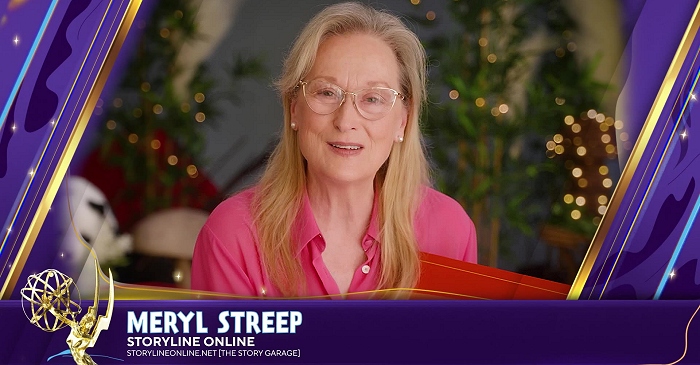|
Simply Streep is your premiere online resource on Meryl Streep's work on film, television and in the theatre - a career that has won her acclaim to be one of the world's greatest living actresses. Created in 1999, Simply Streep has built an extensive collection over the past 25 years to discover Miss Streep's body of work through thousands of photographs, articles and video clips. Enjoy your stay and check back soon.
|
Sky Island
July 01, 2011
· PBS Television
· 27 minutes
|


In Northern New Mexico, a range of mountains rises up from the high desert: a wild, rugged land of the Faraway Nearby. The volcanic Jemez are isolated from all other mountain ranges — an island in the sky, surrounded by a desert sea. In Sky Island, environmental filmmaker John Grabowska (Ribbon of Sand, Crown of the Continent) profiles this captivating landscape and humankind’s place within it, examining the global warming effects that have already dramatically impacted the high desert and alpine ecosystems. This exploration of identity, place and perception features breathtaking cinematography, narration by acclaimed actress Meryl Streep, readings by Pulitzer Prize winner N. Scott Momaday and a sweeping orchestral score by Academy Award winner Todd Boekelheide. The center of the Jemez Mountains is a slumbering supervolcano that exploded more than one million years ago in massive eruptions, creating a plateau of volcanic ash welded into rock up to 900 feet deep. Through the millennia, water sliced through the plateau, cutting myriad canyons that open onto the Rio Grande, which flows south through a massive rift valley on the eastern edge of the Jemez. From the Rio to the heights of the Jemez, the land rises more than a mile in elevation, creating different zones of life as temperature drops and moisture climbs in the steep ascent from canyon floor to alpine peak. Encompassed in this rise is Bandelier National Monument, which preserves the unique dwellings of the Ancestral Pueblo people who farmed in the canyons and on the plateaus for centuries. The human history of this region spans more than ten millennia, and the vestiges of the Ancestral Pueblo settlements can be seen in the canyon floor pueblos as well as cliff dwellings, explored by climbing ladders up to cavate openings. Much of the Jemez Mountains are public lands, including Bandelier, the Santa Fe National Forest and, at the center of the range, the Valles Caldera National Preserve, the heart of the giant volcano.
Cataclysmic changes in the Jemez are not only in the distant geologic past, however. Sky Island examines how anthropogenic climate change has already manifested itself in these desert mountains, with diminishing snowpack, hotter temperatures and extended drought. The Jemez Mountains are considered the epicenter of climate change effects in New Mexico with serious implications for the endemic species that live only in these isolated “sky island” mountains. Dramatic forest collapse — more than 90% of the pinyon pines have already died due to drought, heat and opportunistic beetles — means that the Desert Southwest will be a different landscape from the one made familiar by Georgia O’Keeffe paintings and Ansel Adams photographs. But as Sky Island makes clear, while climate change is inevitable, despair is not. Climate change poses no threat to the continuation of life on Earth, but it will determine which lives survive, and how. Drought-resistant grasslands are recolonizing the plateau where the pinyons died, and continued protection of undeveloped public lands like parks and wildland forests can help alleviate effects of a warming planet by absorbing carbon dioxide. Ultimately, the film tells a lyrical story of a fascinating landscape with deep personal significance for Momaday, an American Indian who grew up in the Jemez. As he poignantly concludes, “Let us learn to live rightly in this world.”










